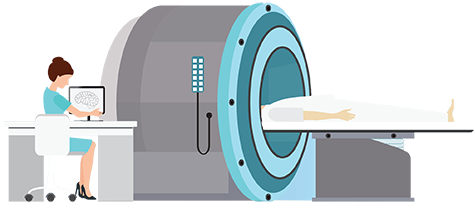

Radiologic technologists have the important role of doing diagnostic imaging on patients so that physicians can determine whether they have an illness or injury and what the course of treatment should be. Of course, there is more than one type of imaging, so a career in radiology can include working with X-ray, MRI or ultrasound machines, among others. According to the Bureau of Labor Statistics (BLS), the job responsibilities of these health care professionals may include:
Specific jobs in the field include:
Students looking for radiologic technologist schools in Florida can check out the following schools, among others, from the National Center for Education Statistics for potential programs:
According to the BLS, an Associate degree is generally needed to become a radiologic technologist. Certificate and Bachelor’s degree programs may also be available, but an Associate degree may be adequate to gain the knowledge to be able to take any state or national test as part of the process of state licensure. Students in an Associate degree program, which typically takes two years to complete, can gain a vast amount of background knowledge, in areas like positioning and related anatomy, basic patient care procedures and radiographic physics. Clinical education is typically part of the curriculum offered in radiologic technologist schools in Florida and nationwide, providing students with hands-on skills working with X-ray equipment.Completing an accredited program through the Joint Review Committee on Education in Radiologic Technology (JRCERT) is also important because states may require that students graduate from an accredited program to be able to be licensed there. Requirements can vary by state, but to be state licensed students generally do need to take a state exam or one given through the American Registry of Radiologic Technologists (ARRT) to prove competency. The ARRT reports that 37 states use, or accept, its exam as part of state licensing procedures. In Florida, completion of a program of study is not necessary for licensing, but applicants must be eligible to take the ARRT and be able to pass for licensure, according to the Florida Department of Health.
Check out the table below for the average annual salaries of different radiology jobs in the Sunshine State. Keep in mind that pay may vary based on where you live in Florida.
| Career | Total Employment | Annual Mean Wage |
|---|---|---|
| Cardiovascular Technologists and Technicians | 5,080 | 50,330 |
| Diagnostic Medical Sonographers | 5,380 | 66,310 |
| Magnetic Resonance Imaging Technologists | 3,040 | 63,980 |
| Nuclear Medicine Technologists | 1,600 | 74,470 |
| Radiologic Technologists and Technicians | 13,830 | 57,150 |